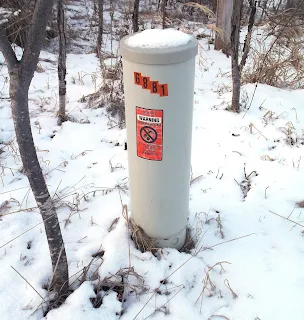He graciously sent me a return email with extensive notes. I am saving some of his comments to use as the basis for future essays.
The most important paragraph was a short one buried right in the middle of his letter:
Since fire is such a critical tool for ecological management, fire use...has potential to impact the availability of the tool if property damage accidents happen or negative PR from poor smoke management occurs. It is a special tool that requires training and expertise. Source for prescribe fire consulting and training. http://firecouncil.org/
I took the liberty of drilling into the Fire Council website and extracting their "Best Practices" document.
It is a daunting document. It is eleven pages long and most of it consists of checklists.
While the Best Practices document is intimidating, it does make you think. It is far too easy to hyperfocus on the core task and to not attend to all of the supporting activities. And, in our enthusiasm, it is easy to go so fast that we fail to make contingency plans for all of the things that can go wrong.
Quoting from the Best Practices document:
The objectives of this paper are to:
- Expose the reader to the state of the art, science, and practice of prescribed burning;
- Identify the best management practices (BMP) for prescribed burning;
- Guide the reader through the safe and prudent application of prescribed burning
- Connect the reader to related resources to aid in understanding prescribed burning
The Best Management Practices (condensed version)
- The prescribed burn must be supported with a written "burn plan". (This is called "documenting due diligence" in the event things should go sideways in a very big way. On the positive side, good plans greatly reduce the probability of traveling sideways at high rates of speed.)
- Prescribed burn plans will clearly identify the objective of the burn plan and
- Prescribed burn plans will clearly identify the expected ecological results of the burn (many examples given in the text of the document)
- Prescribed burn plans will identify all necessary permits that shall be obtained before the burn (this is a good time to buy a few beverages for your favorite fire-fighter. They are a great resource for this part of the plan)
- The prescribed burn plan will include a description (can be a map/drawing/satellite shot from Google maps with target area highlighted) of the parcel to be burned and the objective of the burn
- The burn plan describes the Go/NoGo conditions and the prescription for the burn to safely meet the objectives of the burn (Examples: Range of wind speed, range of acceptable wind directions, humidity....)
- The burn plan will identify the owner of the parcel along with all of the adjacent land owners (with special emphasis on land owners downwind of the parcel, assuming prevailing wind directions)
- The burn plan will include considerations for smoke management (balancing the impact of dryness and wind speed on both smoke dispersion and controllability. Also, wind direction will have a huge impact on where the smoke plume goes.)
- The burn plan will list all individuals and organizations (with contact phone numbers) who/which need to be notified of the burn. (The burn might occur with relatively short notice since the burn plan will be keyed to weather...the vegetation needs approximately three days to dry after a rain and must be executed when the wind direction and speed comply with the plan It may be necessary to inform folks on relatively short notice. Alternately, the burn can be scheduled with the understanding that it will be rescheduled if any of the plan conditions are violated.)
- The burn plan will identify the location and specifications of all fire breaks. (Fire breaks are a bit of an art. Some fire breaks will be made by brush-hogging months earlier. Other fire breaks will be created the morning of the burn by making smaller burns in the cool, humid, windless morning hours.)
- The prescribed burn plan will identify the method and specifications for ignition of the burns. (There is a great quote from Apocalypse Now that I wish I could use)
- The burn plan will identify the fire containment strategy (or strategies) following the burn.
- The burn plan will identify the crew requirements for the burn including of personnel, duties and responsibilities, safety equipment and training needs. (My personal opinion is that one person should be pulled out of the crew to "manage" and keep a global overview and flow resources- perhaps a job for your favorite fire fighter-. The crew should have a communication plan...radios-channel/subchannel pre-set, group texts or other efficient methods. Contingency plans should also be identified in case things get out-of-hand....)
Other considerations include identifying and armoring or removing things you do not want to burn.
 |
| Google maps is your friend. The fallow area west of the building and along the road can be easily identified in this satellite image. |
If you encounter items that are beyond the scope of your expertise, you can pull in consultants. Remember, your local fire fighter is a great resource.
And, after the first few times through the process, you can manage by exceptions. Were there any new folks who moved in since the last burn? Are there any new or novel risks on adjacent properties?

No comments:
Post a Comment
Readers who are willing to comment make this a better blog. Civil dialog is a valuable thing.